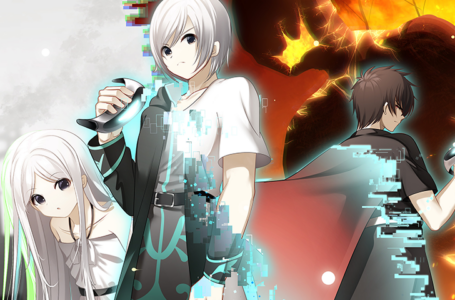The enduring appeal of Deep Space Waifu
Ever since Valve decided to ditch its Greenlight system and “open up” Steam a bit more, the platform has become rather notorious for shovelware — particularly that which has the word “Hentai” in the title, and which features artwork stolen from other sources. And at first glance, you’d be forgiven for assuming the Deep Space Waifu series was part of this unfortunate trend.
However, anyone who has spent any time with the Deep Space Waifu series will gladly tell you that although these games are rough around the edges and filled with endearing jank, they’re clearly a labour of love for their developers Neko Climax Studios — and they’ve proven popular enough for the team to continue developing and improving them since the first title in the series showed up in 2017.
Not only that, the Deep Space Waifu series even spurred the popularity of similar games that do things with their own twist, with probably the best example being the enjoyable Waifu Uncovered — to date the only game where you can see an anime vagina on Nintendo Switch, but only in its physical release.
It’s interesting to note that Waifu Uncovered’s creators claim that they never played Deep Space Waifu before releasing Waifu Uncovered; they instead based their gameplay on a title named Vortex Attack, while Deep Space Waifu is a clone of an obscure 2001 Japanese game called Sentimental Shooting.
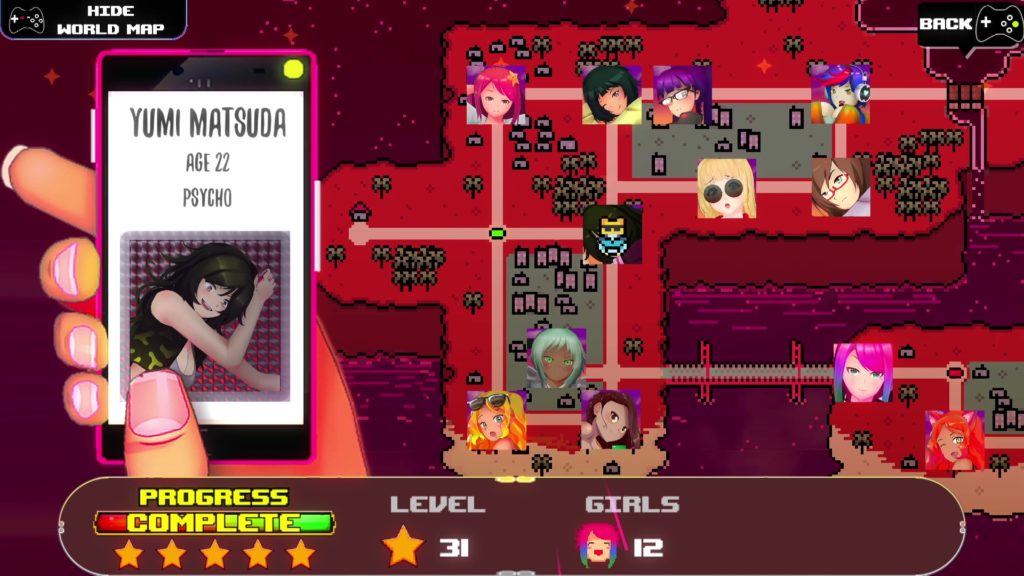
For the unfamiliar, Deep Space Waifu is a series of “strip ’em up” games in which you play the role of King Bear (or, in later installments, some of his allies) as you attempt to “date” a series of girls. This is achieved through a combination of defending them from alien attack and shooting all of their clothes off — unless you’re playing “Gentleman Mode”, of course, in which you must prioritise blasting the aliens and specifically avoid shooting the girls’ clothes off, because that’s not a very gentlemanly thing to do.
In practice, Deep Space Waifu, like Sentimental Shooting before it, unfolds as a top-down shoot ’em up with clear influences from the “bullet hell” subgenre. Your player sprite is large, but only a small part of it is vulnerable, so you can navigate your way through some perilous, screen-filling bullet patterns at times — though the most reliable means of keeping yourself safe is fending off your aggressors as soon as possible.
As you blast away at the enemies in Deep Space Waifu, you’ll uncover hidden “weak points” on the outfit of the girls in the background. Destroy all of these weak points and then concentrate your fire on the garment as a whole and it will eventually explode off. Destroy all the girl’s clothes and you have “completed” her — though you still need to clear the stage by defeating its boss enemy in order to record this satisfactory result.
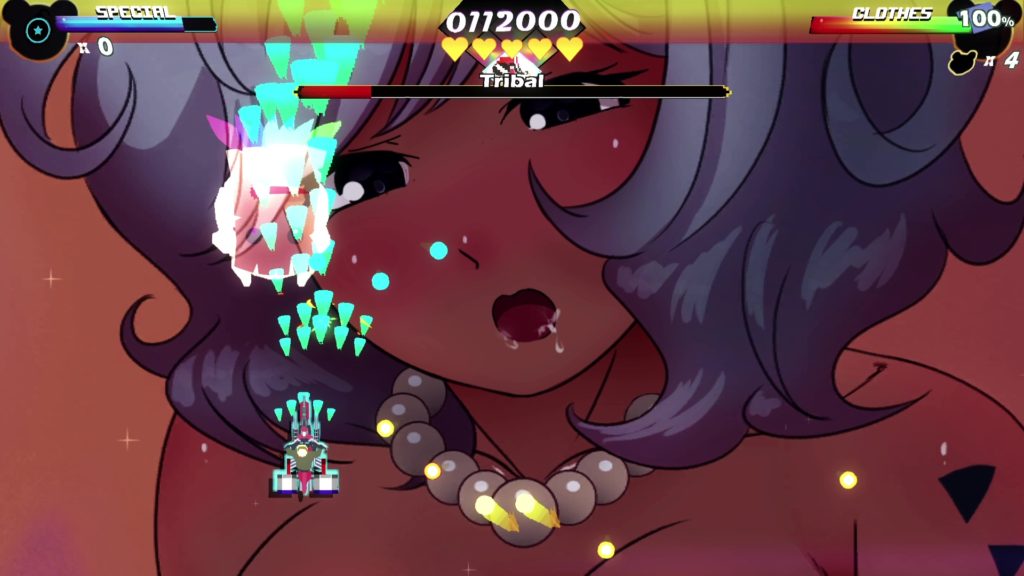
As gratuitous and silly as Deep Space Waifu’s clothes-blasting mechanic is, it does add an interesting twist to the shoot ’em up gameplay, because it means you have to make some meaningful decisions as you play. Do you focus your fire on the clothes in order to clear them as quickly as possible, or do you wait for the camera to pan back around — perhaps during the dangerous boss fights — and pick them off later? Can you safely negotiate the incoming bullets in order to finish off that pair of panties, or should you use one of your precious special weapons to help clear a path?
The Deep Space Waifu games are all designed with a solid understanding of what makes a good shoot ’em up, too. Enemies move in recognisable formations, and different types of enemy make use of specific, learnable attack patterns. As you play, you’ll learn to prioritise the particular types of enemy who are most likely to cause you trouble, and this, in turn, will help you clear a path to those clothing targets.
Deep Space Waifu’s boss fights, likewise, make use of interesting, aesthetically pleasing patterns for you to negotiate rather than just blasting away at you blindly. When combined with the fact that in many stages you need to finish off the clothes-blasting while fending off the boss, there are some interesting encounters to survive along the way.
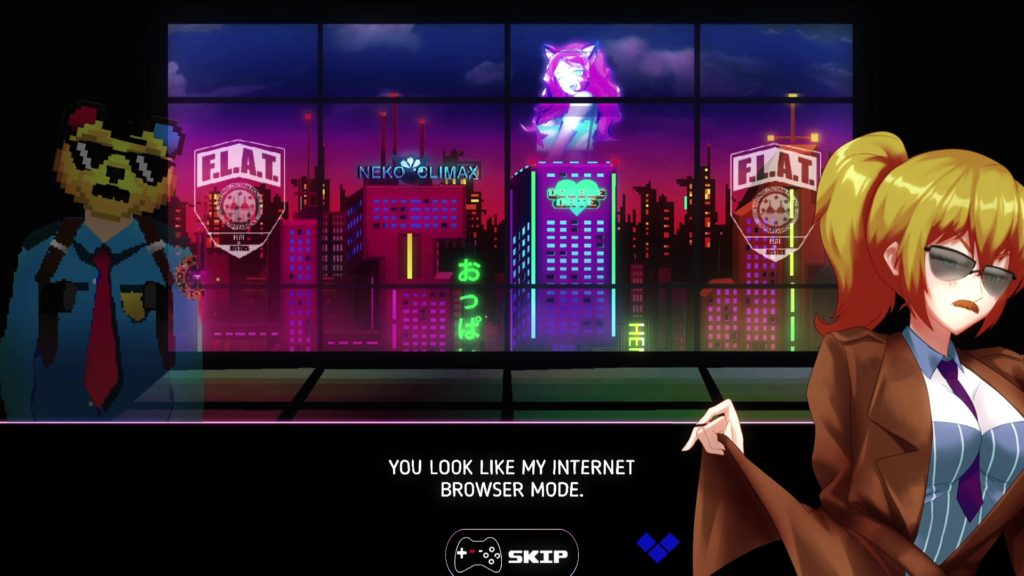
So we can say that the gameplay of Deep Space Waifu, although not on a par with the intricate designs of bigger budget, more specialist shoot ’em ups, is solid, and that’s a core part of its appeal. The rest of that enduring appeal comes from its sense of humour and its aesthetic.
Despite not being Japanese, Deep Space Waifu leans hard into the “ironic otaku” sense of humour that is popular among many fans of Asian popular entertainment online, particularly on social media. It plays up “weeaboo” stereotypes mercilessly and without remorse, but it’s clear that its mockery is coming from a place of affection and understanding rather than maliciousness.
The humour won’t be to everyone’s taste, for sure, but for those who enjoy a certain amount of self-deprecating humour and humble acknowledgement that yes, they enjoy lewd things, the game’s overall tone will resonate well. Plus the “story” sequences in each game that feature this kind of humour are both short and easily skippable if you do find yourself bouncing off them somewhat.
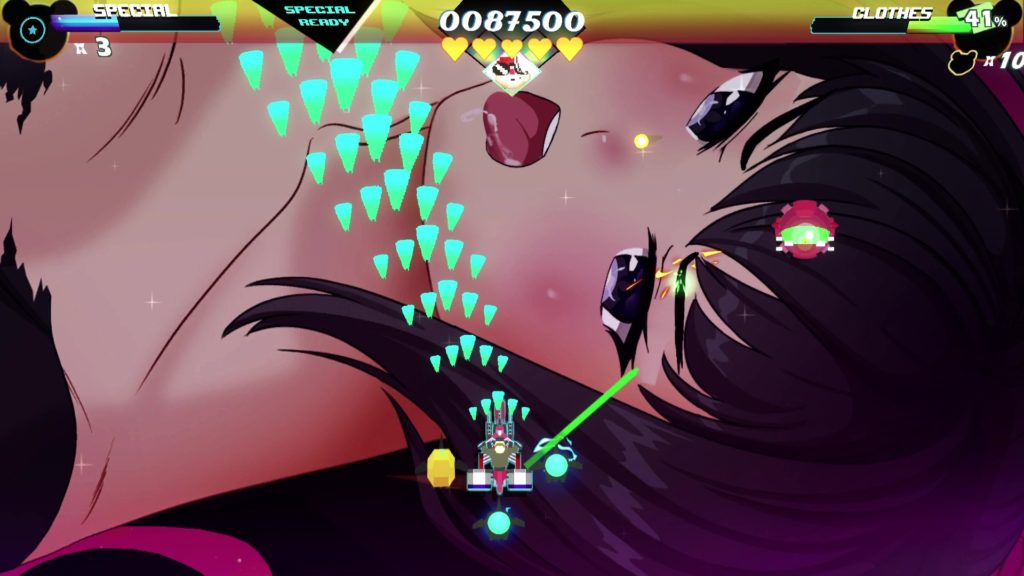
The game also acknowledges popular visual memes and trends to go along with this style of humour; many of the girls, particularly in the later installments, make a tongue-lolling “ahegao” face while you’re shooting at them, for example — while a relatively common sight in hentai, the ironic use of ahegao has become more of a meme in western fandoms than anything actually erotic. On top of that, there are several specific games in the series designed specifically to cater to common anime fetishes such as monster girls, catgirls and girls with smaller chests.
Alongside all this, each game in the Deep Space Waifu series has an absolute banger of a soundtrack, inspired by ’80s-style synthwave. The common style gives the series as a whole a sense of consistency, but each game has its own distinct sound due to the unique tracks used. This is quite welcome, because actual gameplay side of things has become relatively interchangeable over time — improvements in later Deep Space Waifu games have been ported back to earlier installments, meaning they all play in a very similar way now.
Perhaps the most appealing thing about the Deep Space Waifu series, though, is that there’s a rather “punk” atmosphere to it all. You get the distinct impression that Neko Climax Studios created these games simply because they thought it might be fun to do so, and that they don’t care what anyone thinks of them or their work. There’s an endearingly scrappy feel to the production values of each of them — though never enough to make them feel unfinished or unpolished. Rather, there’s a distinct sense of “this is how it is; like it or lump it” — and you have to respect that.
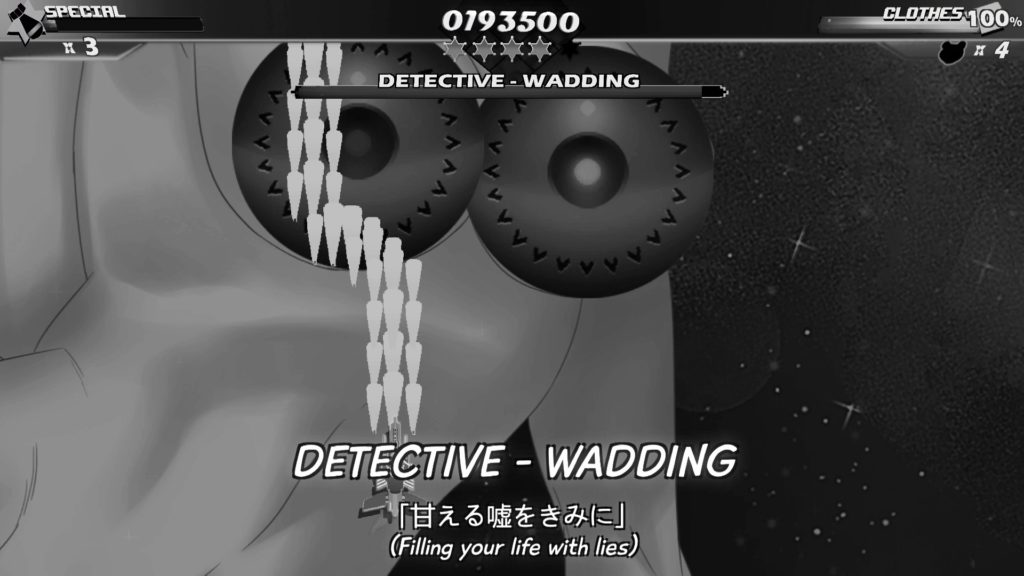
Are the Deep Space Waifu games destined to go down as legendary masterpieces of gaming that will be remembered for all eternity? Unlikely. But they are enjoyable experiences worth having while they exist. And the series as a whole has proven itself to have legs, having been around since 2017 — and with each installment enjoying several thousand positive reviews from players on Steam.
If you’re in the mood for something where you can just switch off your brain and enjoy without contemplating the deeper meaning of anything, they’re ideal. And sometimes that’s exactly what you want from your gaming time.
Also don’t forget to put a blank text file named “nude.patch” in the games’ data folders. You’ll thank me later.
Join The Discussion
Rice Digital Discord
Rice Digital Twitter
Rice Digital Facebook
Or write us a letter for the Rice Digital Friday Letters Page by clicking here!
Disclosure: Some links in this article may be affiliate links, which means we may earn a small commission if you make a purchase after clicking on them. This is at no additional cost to you and helps support Rice Digital!
- Letter from the Editor: passing the torch - June 30, 2023
- Super Woden GP 2 is looking promising - June 30, 2023
- Inti Creates is making a 32 bit-style Love Live action platformer - June 26, 2023




